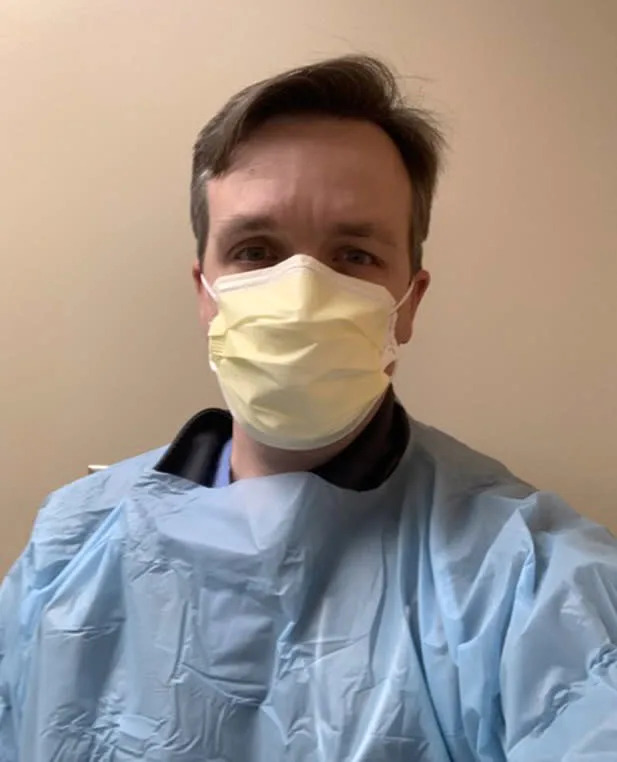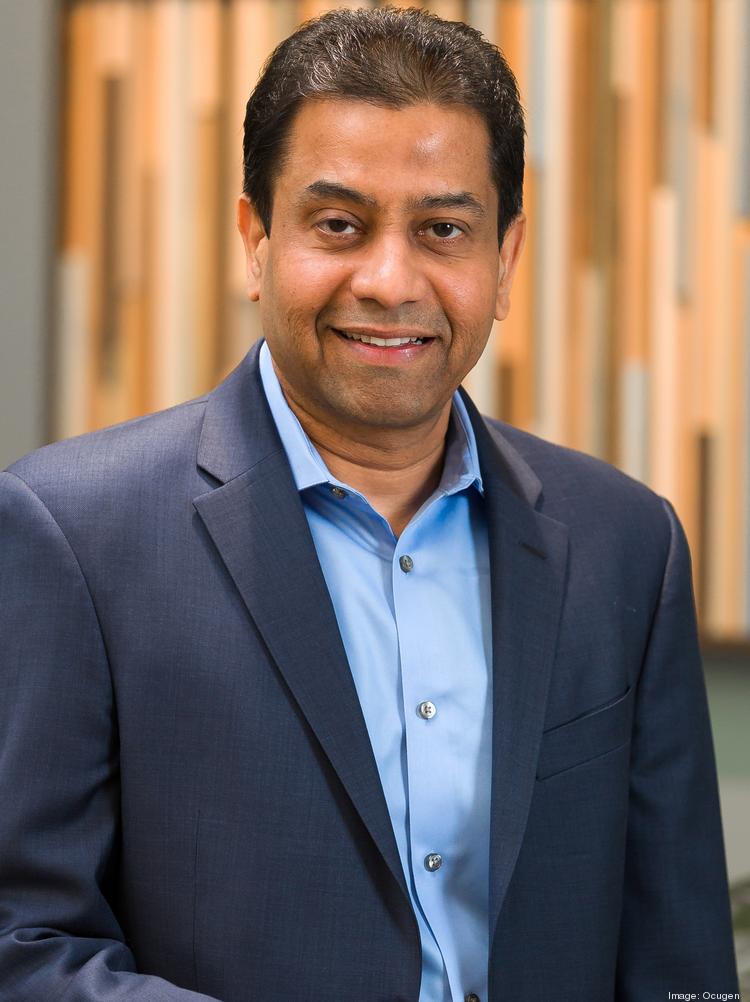
Erik Ortiz
Thu, January 27, 2022, 9:00 PM·6 min read
The notice from the federal government took Lee Dossett, a doctor in Lexington, Kentucky, by surprise. "Congratulations!" it began.
After a couple of years of denials for a student loan forgiveness program designed for public servants, Dossett, who has worked in the nonprofit sector for 10 years, was told last week that not only was his application re-evaluated, but that the Department of Education had determined he should have his outstanding medical school loans erased altogether — about $75,000 worth.
"I was completely shocked because I had honestly given up on getting it," Dossett said.

Image: Lee Dossett. (Courtesy of Lee Dossett)
But a record number of student borrowers are reaping the same benefit after the Biden administration in October began relaxing stringent rules around Public Service Loan Forgiveness, which launched in 2007 to help teachers, health care workers, military members and other public servants earn debt relief on their federal loans. As of last week, more than 70,000 borrowers qualified for debt forgiveness, amounting to about $5 billion in relief, the Department of Education said.
Before the overhaul, just 16,000 borrowers of about 1.3 million enrolled applicants had their loans' remaining balances expunged through the program, according to federal data.
Cody Hounanian, the executive director of the Student Debt Crisis Center, a nonprofit organization that advocates for student borrowers, said the sudden notices of discharged debts are a blessing for many applicants who dutifully made the required 120 monthly payments or were on course to and yet were denied because they were inadvertently enrolled in the wrong payment plan or had the wrong type of loan or due to another technicality.
"It's very emotional," Hounanian said of the wave of financial assistance. "It's changing their lives for the better."
Student borrowers who have benefited in recent days are sharing their shock on social media.
But the latest reversal is also a "double-edged sword" for many borrowers, Hounanian said.
Those hoping to qualify will have until Oct. 31 to submit an application form under a limited-time waiver. Potentially 550,000 borrowers stand to benefit, the federal government said. In addition, student borrowers who may previously have been disqualified because they had a loan through Federal Family Education Loans, a program that ended in 2010, are now eligible. The catch is they will have to make sure such loans are consolidated into a new, federal direct loan.
Complicating the process as well is that last year, two major student loan companies — Navient and the Pennsylvania Higher Education Assistance Agency, often referred to as FedLoan — announced they were ending their contracts to service loans with the federal government. Some 16 million student borrowers were being transferred to new servicers, a monumental undertaking that student advocates worry could present a raft of bureaucratic problems — and only make applying for the already-troubled Public Service Loan Forgiveness that much more arduous.
"Unfortunately, there are some folks who with this news that debt relief is attainable may find the process confusing," Hounanian said.
But the federal government said it is trying to simplify the steps, with about 22,000 borrowers initially having their debts automatically canceled.
In December, President Joe Biden also announced the federal government would extend its moratorium on all federal student loan payments through May amid the pandemic and rising consumer costs.
The White House still faces pressure to cancel student debt and help a broader swath of borrowers — more than 44 million Americans who owe about $1.7 trillion in student loans. A town hall was scheduled Thursday among advocacy groups like the Student Debt Crisis Center and Democratic lawmakers, including Senate Majority Leader Chuck Schumer of New York and Sen. Elizabeth Warren of Massachusetts, to call for the elimination of student debt.
At the very least, those advocates say, the loosening of rules around a program like Public Service Loan Forgiveness should be permanent. A 2019 Government Accountability Office report found that the Education Department under the previous secretary, Betsy DeVos, had rejected a staggering 99 percent of applications as part of a temporary expansion of the program in 2018.
Jane Saunders, who received her doctorate from the University of Texas at Austin in 2008 and taught English for a decade, didn't know about federal student loan forgiveness until a friend recommended she consolidate her loans in 2011.
But a few years passed before she realized her mistake: Her loans were being handled by a servicer that didn't qualify her for the program. She then switched servicers, but at one point, after years of making payments, she was told some of them didn't count, and the ever-tightening rules of the program were frustrating.
"It seemed like they were building the plane while we were on it," Saunders said.
But her fortunes reversed in December, she said, after she reapplied for relief after the Biden administration altered some of the program's requirements. She learned her outstanding debt — $106,000 — was wiped clear, and she also received credit for a few months in which she paid more than she needed to.
"I couldn't breathe when I saw the zero balance," Saunders said. "You know how your life is supposed to flash by you as you're dying? It was kind of like that only now I could see a potentially different life in front of me. One where I could buy a car or maybe take a summer off for once."
The stress of her student loan obligation while working as a teacher, getting her doctoral degree and also making house payments and meeting other financial burdens felt crushing as she tried to sock away for retirement. She said she remains cautious.
"Even trying to put more in now that the loans are gone is going to mean I work until 70 likely," said Saunders, 56. "And it's not gonna be a luxurious retirement even at that age."
But despite all of the agitation, Saunders said she doesn’t regret getting her degree. Neither does Dossett, who after seeing his medical school loans forgiven, shared his amazement in a tweet that went viral.
During the pandemic, Dossett has been helping to care for Covid-infected hospitalized patients, and the burnout coupled with anxieties over his student debt have been taxing.
But now, he said, he sees a way forward for not only himself but others who may want to pursue medicine, particularly people who are uncertain about medical school because of the initial debt they can incur.
"With forgiveness in sight, doctors would be more willing to go into lower-paying specialties, such as primary care and pediatrics," he said. "The more of these doctors there are, the better for society and the health of the nation."













